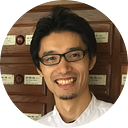How Was Chinese Medicine Introduced In Japan? | AC Punc Acupuncture

How was Chinese Medicine Introduced in Japan?

Chinese medicine was introduced to Japan from China after the 5th and 6th centuries.
At that time, Ancient Japanese doctors brought many Chinese prescription herbs, drugs, and medical books.
After that, They performed medical treatment (diagnosis and treatment) according to traditional Chinese medicine until the Muromachi era. However, after that, it developed independently in Japan.
It has evolved and established medicine that adjusts Japan’s climate, the constitution, and the lifestyle of the Japanese people.
Kampo used in modern medicine can be said to be “Japanese unique medicine” protected and developed as traditional Japanese medicine.
Main features of Kampo medicine (Chinese medicine)
- Natural science and traditional medicine accumulation of treatment experience of ancestors
- Harmonize the whole body by uniting the mind and body
- Focus on the constitution and characteristics of the individual and look at the symptoms.
- Use “Chinese medicine,” which is a mixture of Chinese herbs based on natural products. Since one Chinese formula contains multiple ingredients, we can expect that they are effective for various symptoms.
Western medicines are usually made from a single active ingredient. They have a substantial effect on a single symptom or illness, such as lowering blood pressure, killing bacteria, or relieving fever or pain.
In western medicine, the basis is emphasized by the test and patient complaints.
The results of the tests are used to search for possible illnesses and to consider treatment methods. Therefore, western medicine is good at diseases that appear clearly in test results.
On the other hand, Chinese herbal medicine contains multiple active ingredients in one formula, so it is a significant feature for various symptoms.
In addition, Kampo emphasizes the patient’s complaint and constitution and prescribes based on the results.
Therefore, we are good at treating symptoms derived from the constitution (functional dysmenorrhea, poor circulation, weak constitution, etc.) and disorders that do not appear in the examination (symptoms of menopause).
A significant feature of Chinese herbs is that one formula can improve multiple illnesses as well as symptoms.
For example, “Du Huo Ji Sheng Wan” is effective for low back pain and frequent urination, but it may improve multiple symptoms such as tiredness and swelling feet.
Please feel welcome to comment if you have any questions about this post.

Sayonara till next post.
About Author: Satoru Ozawa — Doctor of Oriental Medicine, an acupuncturist, and a Chinese herb specialist.
Originally published at https://acpunc.com on March 9, 2021.
